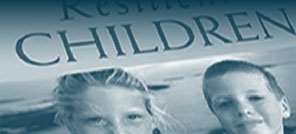We are very happy that you like sharing articles from the site. To send more articles to your friends please copy and paste the page address into a separate email.Thank You.
Printer-Friendly Version | Email Article
A recent American Psychological Association report “Stress in America” noted that financial worries, including inflation, and the war in Ukraine have “piled on to a nation stuck in COVID-19 survival mode.” The report observed that the war has intensified fear and anxiety in the United States. As one reflection of these findings, I have received many comments and questions during this past month related to the Russian invasion of Ukraine. Individuals, already feeling depressed and depleted by a pandemic that has now lasted more than two years and a seemingly endless divisiveness on so many levels, wonder how to cope with the new stress occasioned by what is transpiring in Ukraine. Parents question how best to discuss and explain the Ukrainian events with their children who are not easily shielded from news accounts and videos that vividly display the killing of civilians, the bombing of schools, hospitals, and theaters, and the anguish etched on the faces of mothers and children as they flee their country, leaving behind husbands and fathers who remain to defend their country.
As I started to write this article, my initial intention was to suggest actions we might assume to manage this recent disturbing event. I am aware that the situation is certainly more distressing for those living in or fleeing from the war or those who have family and friends in Ukraine who are now refugees in a neighboring country. However, as I began to write the column, I quickly recognized that the main strategies I planned to discuss were the same strategies I have outlined on numerous occasions. Although each situation is different, since 2001 I have written or spoken about coping with the impact of man-made or natural disasters that have taxed the emotional and physical well-being of our children and ourselves. These include but are not limited to terrorist attacks on 9/11, the wars in Iraq and Afghanistan, the devastation wrought by Hurricane Katrina, the ongoing threats of terrorism, the political divisiveness and anger in the United States and other countries, the storming of the U.S. Capitol on January 6, 2021, and since March, 2020, the ramifications of the pandemic.
Not surprisingly, the resilience strategies I have described in writing about each of these events have been similar and include:
–the presence of positive relations as embodied in the notion of what the late psychologist Julius Segal called a “charismatic adult,” defined as an adult from whom others “gather strength”;
–the need to develop an outlook of “personal control” or focusing on what we have influence over rather than expending time and energy on addressing situations over which we have little, if any, control;
–the importance of considering things for which we are grateful as well as expressing gratitude towards others;
–the need to engage in “contributory” or “charitable” activities that serve to enrich others while adding meaning and purpose to our own lives
–the importance of identifying not only possible obstacles and setbacks that may arise as we strive to reach goals but also strategies to apply should these obstacles arise.
The Significance of Structure and Rituals
Another action for reinforcing resilience, while impactful, is one that I have not emphasized as much as others. It can be described as creating structure and regularity to one’s life that will serve to lessen feelings of uncertainty and strengthen a sense of personal control. As one example, when the coronavirus forced children to remain home and learn remotely, I advocated to parents that as much as possible they establish, with their child’s input, a regular schedule for the day. I recommended that parents and other adults do the same for themselves, especially when working at home and confronting many distractions. In subscribing to my own message, I found it very helpful to continue to physically exercise each morning and to set aside about 10-15 minutes each afternoon for meditation. My wife and I also ate dinner at the same time each evening. We were not rigid about any of these practices knowing that unexpected demands were likely to occur, but having a more structured schedule helped to manage the unprecedented unknowns introduced by COVID-19.
A practice that could be placed under the category of maintaining a regular schedule, but deserving separate mention, is to engage in what may be understood as rituals. Rituals help to provide structure and meaning to one’s life and serve as a vehicle through which to reinforce our relationships. I was reminded of the importance of rituals while reading a recently posted article on Harvard Business School’s “Working Knowledge.” The article, “Rituals at Work: Teams that Play Together Stay Together,” was authored by Kristen Senz and described research conducted by Francesco Gino and Michael Norton on the HBS faculty, Tami Kim at the University of Virginia, Ovul Sezer at the University of North Carolina at Chapel Hill, Juliana Schroeder at the University of California at Berkeley, and Jane Risen at the University of Chicago. The article resonated with me for several reasons, especially given my interest in the ways in which the “emotional culture” of an organization determines how effectively that organization operates (for those who may be interested, I described the concept of “emotional culture” in my January and February, 2016 articles)
The Expression of Traditions and Rituals
Before discussing the impact of rituals, I should note I typically have used the words “tradition” and “ritual” interchangeably, as have many others. However, there are those who have asserted that while the two concepts are closely related there are “subtle differences.” Given the focus of this article and the fact that the differences are understood to be “subtle,” I am taking the liberty of using them interchangeably.
Rituals can be expressed in various ways, including via group bonding activities. As a couple of examples, Senz wrote that one group fired a nerf gun to conclude a project and the Notre Dame football team always walked the same route to the stadium. Ringing the bell at a hospital at the conclusion of cancer treatments is another ritual that has gained popularity in the past 25 years. Many group activities also involve food. Senz observed, “Love them or hate them, team-building rituals can fortify bonds among coworkers and create the shared sense that work is more meaningful, which may be especially critical now as managers look to reconnect colleagues re-adjusting to work life after two years of COVID-19 upheaval.” Norton noted that while some employees hesitate participating in group rituals, these rituals can be effective, adding, “Despite the fact that they think the activity is ridiculous, it can over time start to mean something to them, and they then feel differently about their coworkers and their work.”
Gino, Norton, and their colleagues identified three core components of group rituals: physical, communal, and psychological. “Rituals have a physical element—some specific words or actions—and group rituals have a communal element, meaning that we’re all doing it together at the same time. The psychological element is where it gets that symbolic feeling. It feels good to do this in the specific way that we do it. And if we don’t do it the way we do it, we can feel a little bit off.” Senz cited several studies that demonstrated the manner in which rituals, including a team taking turns ordering lunch and eating lunch together, promoted warmer relationships and a more positive work environment. Norton cautioned that if rituals are to be effective in the workplace, it’s important that employees be encouraged to create their own team rituals around activities they enjoy doing together.
Beyond the Workplace
Given the benefits of well-designed rituals in the workplace, we should consider the application of rituals/traditions away from this environment and in our personal lives and homes. For many years I have described the benefits of creating family traditions as a source of well-being. As one example, in Raising Resilient Children, a book I co-authored with my colleague Sam Goldstein, we devoted several pages to the benefits of traditions. We proposed, “Creating traditions and times set aside each day, week, or month as special times with our children establishes an atmosphere in which they feel loved and appreciated. Obviously, this should not preclude having other, spontaneous moments. Whatever form this tradition assumes, time set aside each week for all of our children together as well as each child alone emphasizes that they are important to us and that we love them.”
Establishing rituals with one’s spouse, partner, or significant other is also important. I know that as our children were growing, Marilyn and I attempted to set aside every Saturday night to go out, either just the two of us or with friends. I believe doing so enriched our relationship and enabled us to be more effective parents.
As my readers are well aware and as I listed earlier in this article, I think engaging in “contributory” or “charitable” activities at any age serves to lessen stress. When people feel they are improving the lives of others, it reinforces their sense of purpose and personal control. I have emphasized this point in a number of my writings, especially when discussing strategies for coping more effectively with the ramifications of COVID-19. In Raising Resilient Children, Sam and I state that not only should children observe adults enriching the lives of others on a regular basis, but from an early age they should be involved in charitable activities themselves. Even preschool children can accompany their parents to deliver food to the elderly each month or at holiday times or participate in walks for one’s favorite charity. Or raise monies for resources for refugees from Ukraine.
The significance of maintaining a schedule and traditions was vividly captured in a television news account of children who had fled Ukraine with their mothers. Almost immediately, the mothers and other caregivers established a schedule for the children that included their attending school and also having time for play and physical activity. One of the mothers observed that having a routine that was familiar to the children—even in a foreign country—helped to generate a greater feeling of calm and security, a feeling that was welcome for both the children and their mothers in light the devastation and disruptions they had experienced.
In ending, I would suggest that we reflect upon the traditions and rituals that exist in both our personal and professional lives. For many, rituals are housed in our religious practices such as observances during Easter, Passover, and Ramadan, all of which occur in the upcoming month. I know that the uncertainty and emotional turmoil experienced by so many during the past couple of years have made it increasingly difficult to adhere to certain traditions. However, it is when these traditions are most challenged that they require a renewed effort on our part to maintain them.




